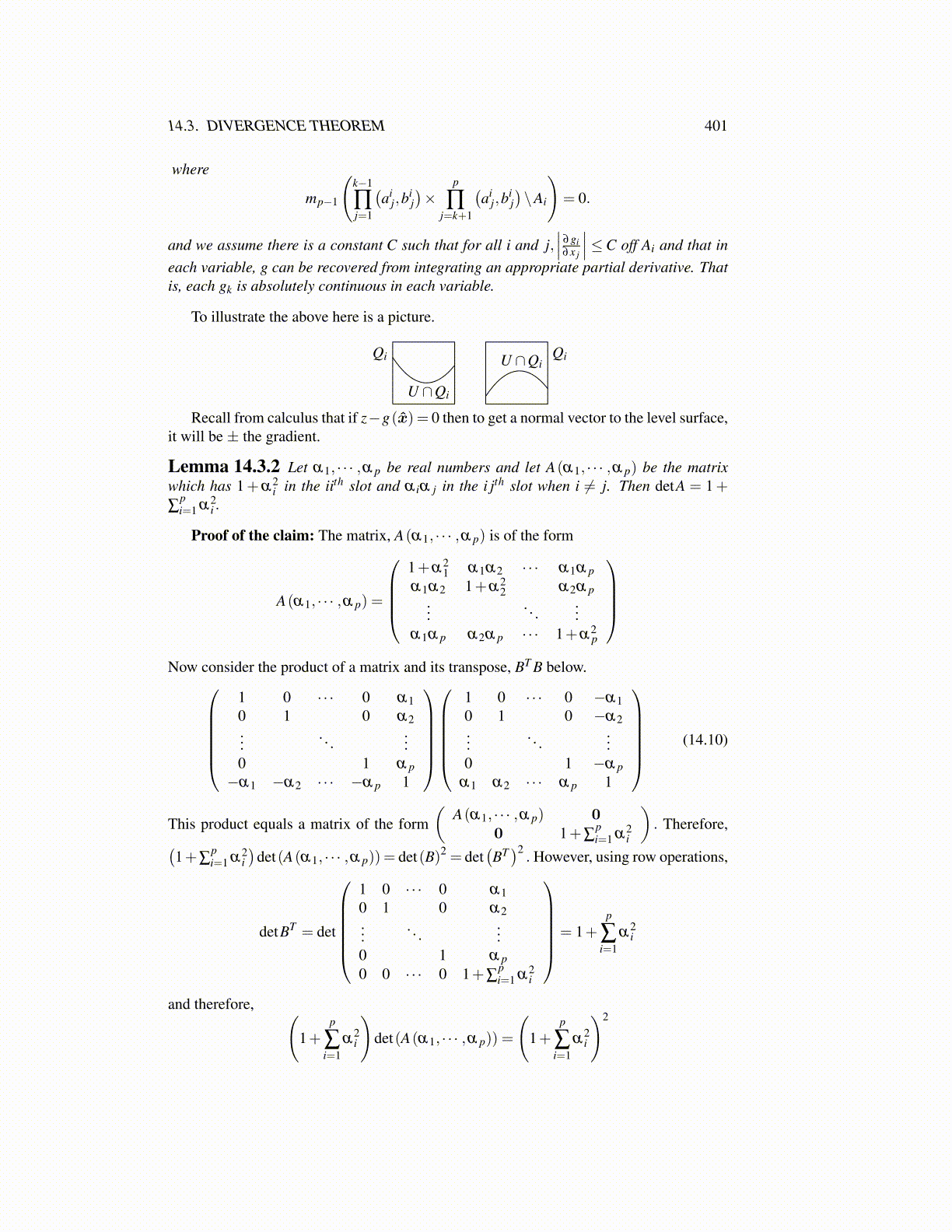
14.3. DIVERGENCE THEOREM 401
where
mp−1
(k−1
∏j=1
(ai
j,bij)×
p
∏j=k+1
(ai
j,bij)\Ai
)= 0.
and we assume there is a constant C such that for all i and j,∣∣∣ ∂gi
∂x j
∣∣∣ ≤C off Ai and that ineach variable, g can be recovered from integrating an appropriate partial derivative. Thatis, each gk is absolutely continuous in each variable.
To illustrate the above here is a picture.
U ∩Qi
Qi U ∩QiQi
Recall from calculus that if z−g(x̂) = 0 then to get a normal vector to the level surface,it will be ± the gradient.
Lemma 14.3.2 Let α1, · · · ,α p be real numbers and let A(α1, · · · ,α p) be the matrixwhich has 1+α2
i in the iith slot and α iα j in the i jth slot when i ̸= j. Then detA = 1+∑
pi=1 α2
i .
Proof of the claim: The matrix, A(α1, · · · ,α p) is of the form
A(α1, · · · ,α p) =
1+α2
1 α1α2 · · · α1α pα1α2 1+α2
2 α2α p...
. . ....
α1α p α2α p · · · 1+α2p
Now consider the product of a matrix and its transpose, BT B below.
1 0 · · · 0 α10 1 0 α2...
. . ....
0 1 α p−α1 −α2 · · · −α p 1
1 0 · · · 0 −α10 1 0 −α2...
. . ....
0 1 −α pα1 α2 · · · α p 1
(14.10)
This product equals a matrix of the form(
A(α1, · · · ,α p) 00 1+∑
pi=1 α2
i
). Therefore,(
1+∑pi=1 α2
i)
det(A(α1, · · · ,α p)) = det(B)2 = det(BT)2. However, using row operations,
detBT = det
1 0 · · · 0 α10 1 0 α2...
. . ....
0 1 α p0 0 · · · 0 1+∑
pi=1 α2
i
= 1+p
∑i=1
α2i
and therefore, (1+
p
∑i=1
α2i
)det(A(α1, · · · ,α p)) =
(1+
p
∑i=1
α2i
)2